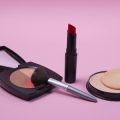1. Understanding Heat Damage: The British Perspective
When it comes to haircare, few things are as misunderstood as the impact of heat styling—especially here in Britain, where our climate and daily routines present unique challenges. Whether you’re blasting your barnet with a hairdryer after getting caught in a downpour, or straightening your fringe before nipping out for a cheeky pint, heat tools are a staple of British grooming. But how exactly does heat styling affect your hair under these very British conditions?
The combination of frequent rain, fluctuating temperatures, and high humidity can leave our hair more vulnerable to damage. Excess moisture from the air can cause hair cuticles to swell, making strands weaker and more prone to breakage when exposed to heat. Add in the tendency for us Brits to reach for heated tools more often during damp weather, and you’ve got a recipe for frazzled ends and lacklustre locks.
Let’s break down some typical scenarios faced by those living in the UK:
British Lifestyle Habit |
Potential Heat Damage Risk |
|---|---|
| Blow-drying after wet commutes | Rapid moisture loss and weakened hair structure |
| Frequent use of straighteners/curlers | Cuticle cracking and split ends |
| Styling on humid days | Swelling cuticles leading to frizz and breakage |
| Excessive towel drying before heat styling | Increased friction and vulnerability to heat |
Understanding how these everyday habits interact with our unpredictable weather is crucial if you want to keep your hair strong and healthy. As we dig deeper into expert strategies throughout this article, remember: protecting your hair from heat isn’t just about products—it’s about adapting your routine to fit our uniquely British lifestyle.
2. Choosing the Right Heat Protection Products in the UK
When it comes to heat protection, British haircare experts emphasise not just using any product, but choosing one that’s suited to both your hair type and the UK’s unique climate. The unpredictable weather—often humid, sometimes dry, and always a bit of a wildcard—means that you need ingredients and brands that truly understand local needs.
Key Ingredients to Look For
British experts recommend checking labels for these essential ingredients:
| Ingredient | Benefit |
|---|---|
| Silicones (e.g., Dimethicone) | Creates a protective barrier against heat and humidity |
| Hydrolysed Wheat Protein | Strengthens hair and reduces breakage under heat |
| Argan Oil | Nourishes and adds shine without weighing hair down |
| Aloe Vera | Hydrates strands and soothes scalp irritation |
Recommended Local Brands
The UK has no shortage of homegrown brands trusted by barbers and stylists alike. Here are some top picks:
- Toni&Guy: Their Heat Protection Mist is a salon staple, especially good for daily styling.
- Philip Kingsley: Known for science-backed formulas, their Daily Damage Defence is ideal for all hair types.
- Umberto Giannini: Vegan-friendly options like their Heat Protection Milk offer lightweight defence for finer hair.
A British Expert’s Tip
If you’re after an extra layer of protection—especially if you regularly commute or exercise outdoors—a leave-in conditioner with UV filters can be a game-changer. Look out for products labelled “UV Defence” or “All-weather Protection” to keep your style sharp whatever the forecast.

3. How to Properly Apply Heat Protection According to UK Stylists
When it comes to heat styling, timing and technique are everything. According to British haircare experts, applying your heat protectant in the right way makes all the difference between healthy shine and unwanted damage. Here’s a simple step-by-step guide used by top UK stylists:
Step-by-Step Application Guide
| Step | What To Do | Expert Tip |
|---|---|---|
| 1. Start With Clean Hair | Towel-dry freshly washed hair until damp, not dripping. | Use a microfibre towel to reduce friction and frizz. |
| 2. Section Your Hair | Divide your hair into manageable sections using clips. | This ensures even product distribution, especially for thicker hair. |
| 3. Apply Heat Protectant | Spray or work a small amount of protectant through each section from mid-lengths to ends. | Hold the bottle 15-20cm away for sprays; use a pea-sized amount for creams or serums. |
| 4. Comb Through | Use a wide-tooth comb to distribute the product evenly. | This prevents clumping and guarantees full coverage. |
| 5. Wait Before Styling | Allow hair to air-dry for a minute or two, or gently blow-dry on low heat until just dry. | This helps the product settle in without dilution from excess moisture. |
When Should You Apply Heat Protectant?
UK professionals agree: always apply heat protection before using any heated tool – whether you’re straightening, curling, or simply blow-drying. For those who use multiple tools (say, a hairdryer followed by straighteners), consider reapplying if there’s been significant time or brushing in between.
Extra Tips from London Salons
- If you’re styling daily, choose a lightweight formula to avoid buildup.
- For fine or thinning hair, opt for sprays over creams – they won’t weigh you down.
Bespoke Advice
Your stylist can recommend specific products suited for British weather – think anti-humidity for rainy days or added hydration for when central heating dries things out. Remember: good application is as crucial as choosing the right product!
4. Everyday Habits: Caring for Hair in the British Weather
We all know how unpredictable the UK weather can be—one minute it’s drizzling, the next it’s blustery winds, and then there’s a rare sunny spell. Navigating such conditions while trying to maintain healthy hair, especially when using heat tools, requires a tailored approach. Here are some practical tips from a British haircare expert on protecting your hair from both heat damage and our classic British elements:
Choose the Right Heat Protectant
Always opt for a lightweight, humidity-resistant heat protectant spray. This not only shields your strands from straighteners or blow-dryers but also forms a barrier against dampness in the air—a lifesaver on those misty mornings.
Smart Styling: Less is More
Try to limit your use of heat tools during particularly humid or wet spells. Embrace air-drying whenever possible, or choose styles that work with your natural texture. If you must style, keep temperatures moderate and avoid going over the same section repeatedly.
Quick Comparison: Heat Tool Tips vs. Weather Protection
| Heat Tool Safety | Weather Protection |
|---|---|
| Apply protectant before styling | Seal with anti-frizz serum after styling |
| Use ceramic tools for even heat | Tie hair up during windy commutes |
| Keep dryer on cool setting for final blast | Cover with a hat or scarf in rain |
Daily Habits to Keep Hair Resilient
- Nighttime Care: Consider sleeping on a silk pillowcase to minimise friction and frizz caused by overnight humidity changes.
- Regular Trims: British weather can make ends brittle—trim every 6-8 weeks to keep them healthy.
- No Overwashing: Daily washing strips away natural oils; stick to 2-3 times per week and use dry shampoo if needed.
A Final Word for Blokes and Lasses Alike
No matter your hair type or length, adapting your routine to fit Britain’s ever-changing weather will help you maximise your heat protection efforts—and keep you looking sharp come rain or shine.
5. A Gent’s Routine: Practical Advice for Men
For British gents, daily haircare isn’t just about looking sharp—it’s about feeling confident and comfortable in all weathers, from the relentless drizzle of Manchester to the blustery winds of Brighton. Adopting a solid heat protection routine is essential, especially if you use heated styling tools or frequent the gym. Here’s a straightforward guide tailored to the UK lifestyle:
Step-by-Step Styling Routine for British Men
| Step | Product | Why It Matters |
|---|---|---|
| 1. Wash & Condition | Sulphate-free shampoo & lightweight conditioner | Cleanses away city grime and prevents dryness, especially crucial with hard London water. |
| 2. Towel Dry | Microfibre towel | Reduces frizz and breakage compared to standard towels—ideal for unpredictable UK humidity. |
| 3. Apply Heat Protectant | Spray or cream with UV filters | Shields hair from both styling tools and occasional British sun exposure. |
| 4. Style with Tools | Ceramic hairdryer or straightener (low to medium heat) | Helps achieve that classic side part or textured quiff without frying your locks. |
| 5. Finish & Hold | Lightweight pomade or matte clay (water-based) | Keeps your style intact through rush hour, wind, and pub evenings—easy to wash out at day’s end. |
Choosing Products That Suit the British Lifestyle
Tip 1: Opt for multi-tasking products—look for heat protectants that also fend off humidity and add a touch of shine, perfect for our often damp climate.
Tip 2: If you cycle or walk to work, consider leave-in sprays with UV protection; they’ll defend against both heat styling and those rare but potent sunny spells.
Tip 3: Embrace lightweight formulas—heavy products can weigh down fine or thinning hair, which is common among British men due to genetics and environmental factors.
Avoid Common Pitfalls
Avoid overusing heated tools; even with protection, daily high-heat can cause cumulative damage. Stick to low-medium settings and take days off when possible. Also, don’t skip the heat protectant even if your hair is short—exposure is exposure!
Your Routine, Your Signature Style
A well-planned routine not only preserves your hair’s health but also keeps you looking sharp whether you’re heading into the office or catching up with mates at the local. Invest in quality essentials tailored to Britain’s unique conditions and you’ll always put your best head forward.
6. Expert Advice: Common Mistakes Brits Make with Heat Protection
When it comes to heat protection, even the savviest among us can slip up. As a British haircare expert, I’ve seen plenty of well-intentioned blokes and ladies make the same errors time and again. Here’s a round-up of classic mistakes—and top advice straight from the salon chair—that’ll help you keep your barnet in tip-top shape.
Easy-to-Avoid Heat Protection Errors
| Mistake | What Happens | Expert Advice |
|---|---|---|
| Skipping heat protectant altogether | Leads to dryness, split ends, and breakage | Always apply a proper heat protectant—even if you’re in a rush |
| Only using heat protection on wet hair | Leaves dry styling (like touch-ups) unprotected | Use a spray for dry hair before straightening or curling as well |
| Applying too much product | Weighs down hair and leaves it greasy or sticky | Stick to the recommended amount for your hair type—usually a 5p-sized blob or a few spritzes |
| Not distributing product evenly | Patches of unprotected hair get damaged faster | Comb through after applying to ensure every strand is covered |
The Do’s & Don’ts Every Brit Should Know
- Do: Adjust the temperature on your tools to suit your hair type (fine hair needs less heat than thick curls)
- Don’t: Crank up the straighteners just because you’re in a hurry; patience pays off with healthier hair
- Do: Get regular trims at your local barber or salon—heat-styled ends are more prone to splitting
Bespoke Advice from British Experts
If you’re ever unsure, ask your stylist for personalised recommendations—they’ll know what works best with our famously unpredictable British weather. Remember, prevention is always better than cure when it comes to heat damage. Pop these tips into your daily routine and you’ll be miles ahead of the crowd, rain or shine.


